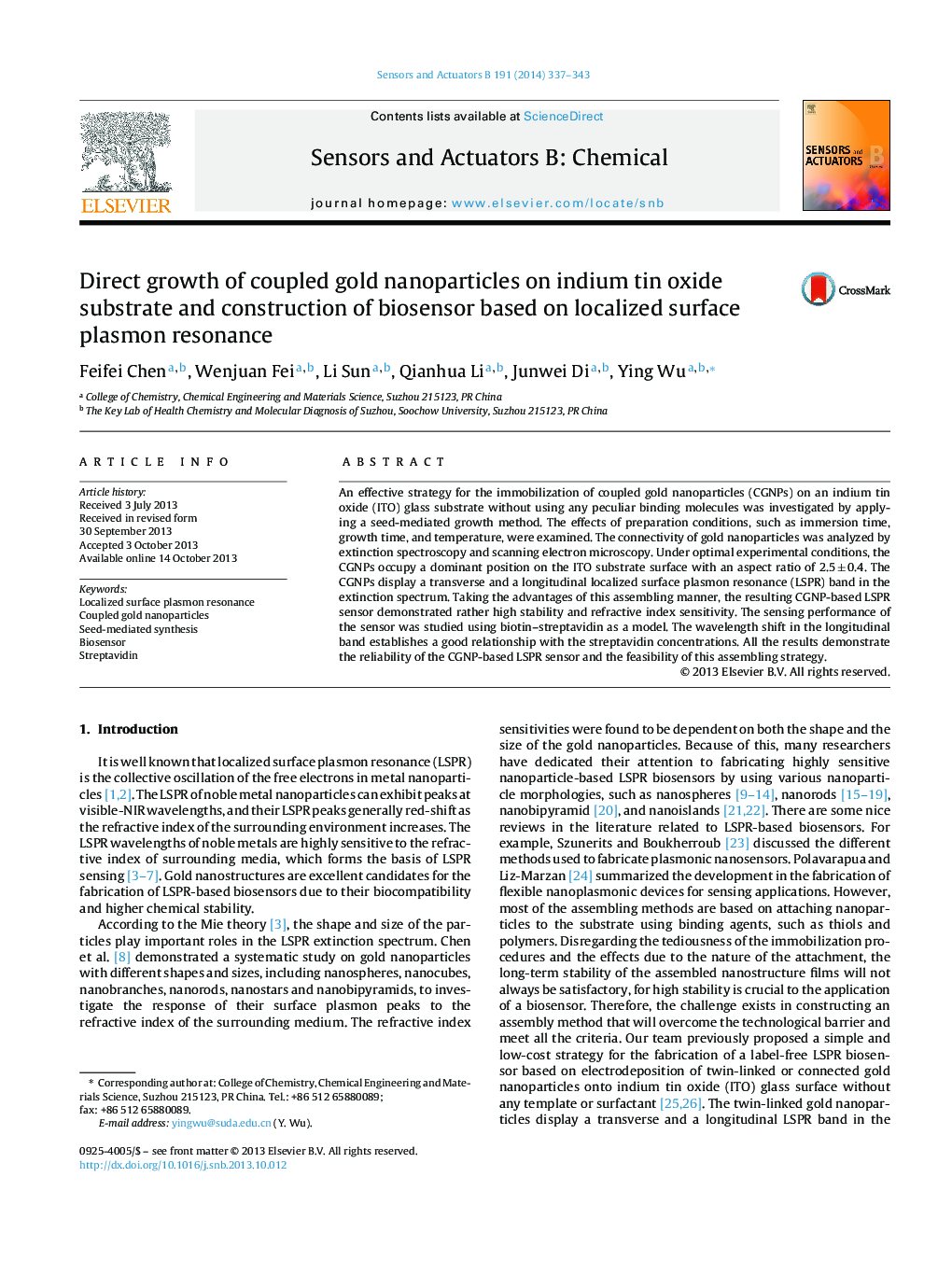| Article ID | Journal | Published Year | Pages | File Type |
|---|---|---|---|---|
| 7147595 | Sensors and Actuators B: Chemical | 2014 | 7 Pages |
Abstract
An effective strategy for the immobilization of coupled gold nanoparticles (CGNPs) on an indium tin oxide (ITO) glass substrate without using any peculiar binding molecules was investigated by applying a seed-mediated growth method. The effects of preparation conditions, such as immersion time, growth time, and temperature, were examined. The connectivity of gold nanoparticles was analyzed by extinction spectroscopy and scanning electron microscopy. Under optimal experimental conditions, the CGNPs occupy a dominant position on the ITO substrate surface with an aspect ratio of 2.5 ± 0.4. The CGNPs display a transverse and a longitudinal localized surface plasmon resonance (LSPR) band in the extinction spectrum. Taking the advantages of this assembling manner, the resulting CGNP-based LSPR sensor demonstrated rather high stability and refractive index sensitivity. The sensing performance of the sensor was studied using biotin-streptavidin as a model. The wavelength shift in the longitudinal band establishes a good relationship with the streptavidin concentrations. All the results demonstrate the reliability of the CGNP-based LSPR sensor and the feasibility of this assembling strategy.
Related Topics
Physical Sciences and Engineering
Chemistry
Analytical Chemistry
Authors
Feifei Chen, Wenjuan Fei, Li Sun, Qianhua Li, Junwei Di, Ying Wu,
